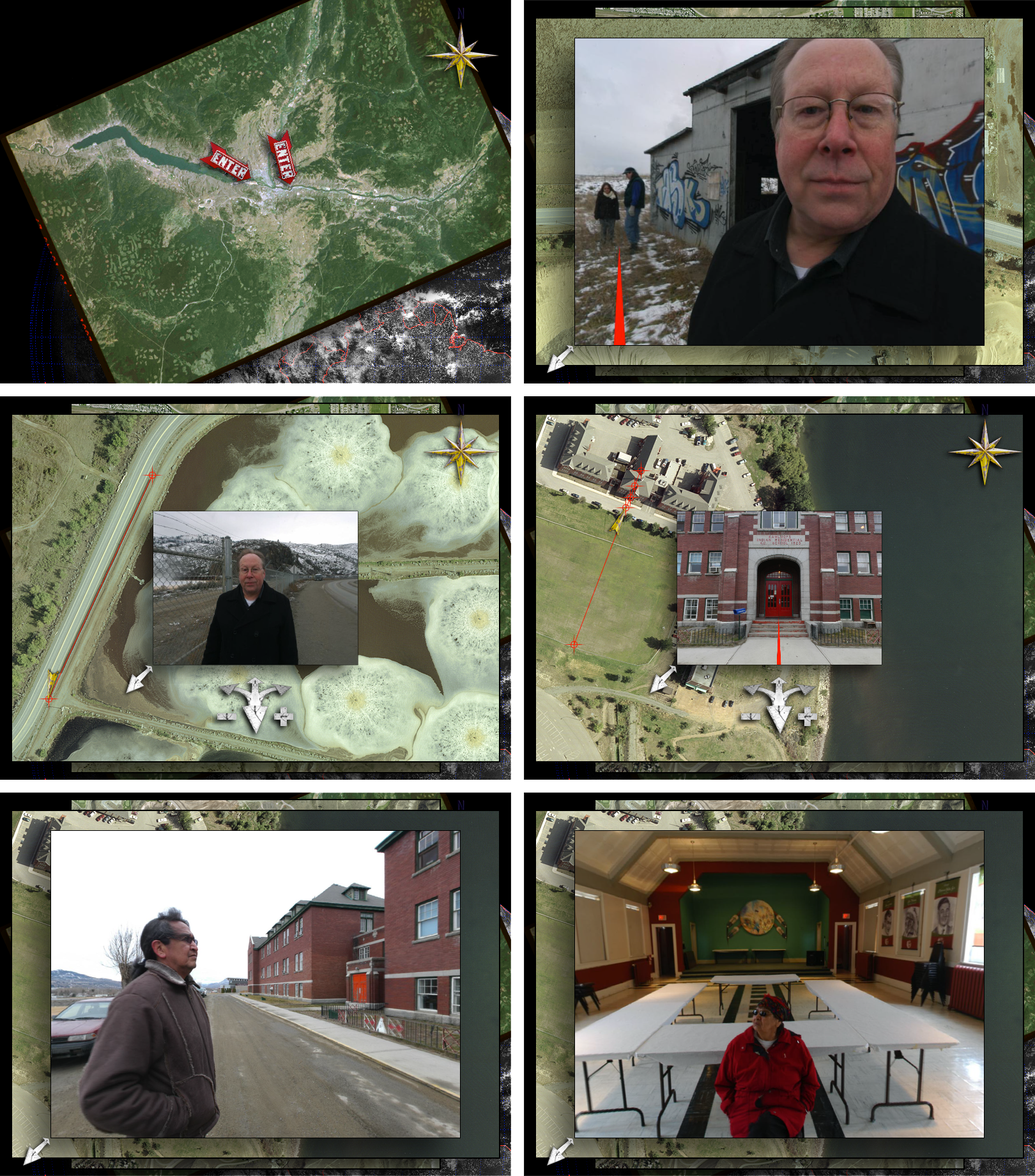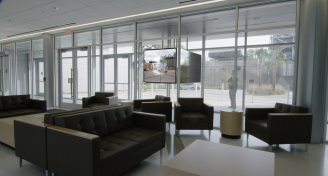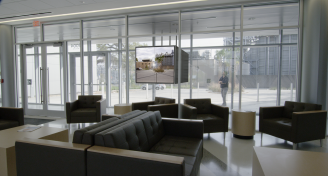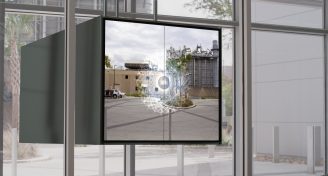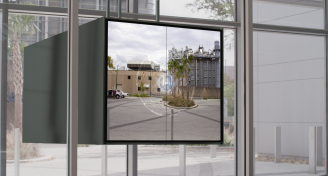Imaging British Columbia
“Imaging Place: British Columbia” focused on the Soft Wood Lumber Treaty between the U.S. and Canada. In 2001 the U.S. government decided to prop up its own inefficient timber industry by imposing a large punitive tariff on Canadian softwood lumber imports. Since Canada and the U.S. both signed the North American Free Trade Agreement, the Canadian government went to the World Trade Organization and filed a complaint. What followed was three years of panels and arbitrators looking at the case, finding the U.S. actions illegal under NAFTA. The U.S. position remains that it won’t accept any decision that rejects U.S. claims, and if Canada wants to end this dispute they have to agree to U.S. terms. Hundreds of miles from any border, issues of globalization dominate the landscape.
With Weyerhaeuser, a U.S. softwood lumber plant, as a backdrop, Michael Jarrett moves through various plant operations drawing correlations between wood pulp and the history of writing.
In the spring of 2006, after the “Imaging British Columbia: Weyerhaeuser” project, I was invited back to Kamloops to deliver a public lecture, conduct a workshop sessions with the Community/University Research Alliance (CURA) of Thompson Rivers University, to further develop the “Imaging British Columbia” project as a pilot project for CURA.
[youtube url="http://www.youtube.com/watch?v=AqcCLZd50XA&feature=player_embedded"][/youtube]
Screen recording from “Imaging Place: British Columbia, Kamloops Indian Residential School,” by John Craig Freeman, 2007
During this stay in Kamloops, I worked with the local Secwepemc (Shuswap) people to produce a new phase of the “Imaging Place: British Columbia” project that focuses on the stories of the Kamloops Indian Residential School. The school was created in 1893 by the Canadian government in cooperation with Roman and Protestant churches to “Christianize and civilize” the Secwepemc.
In “Imaging Place: British Columbia, Kamloops Indian Residential School,” users can navigate through this imposing building where they will encounter several generations of former students recounting their experiences at the school.
